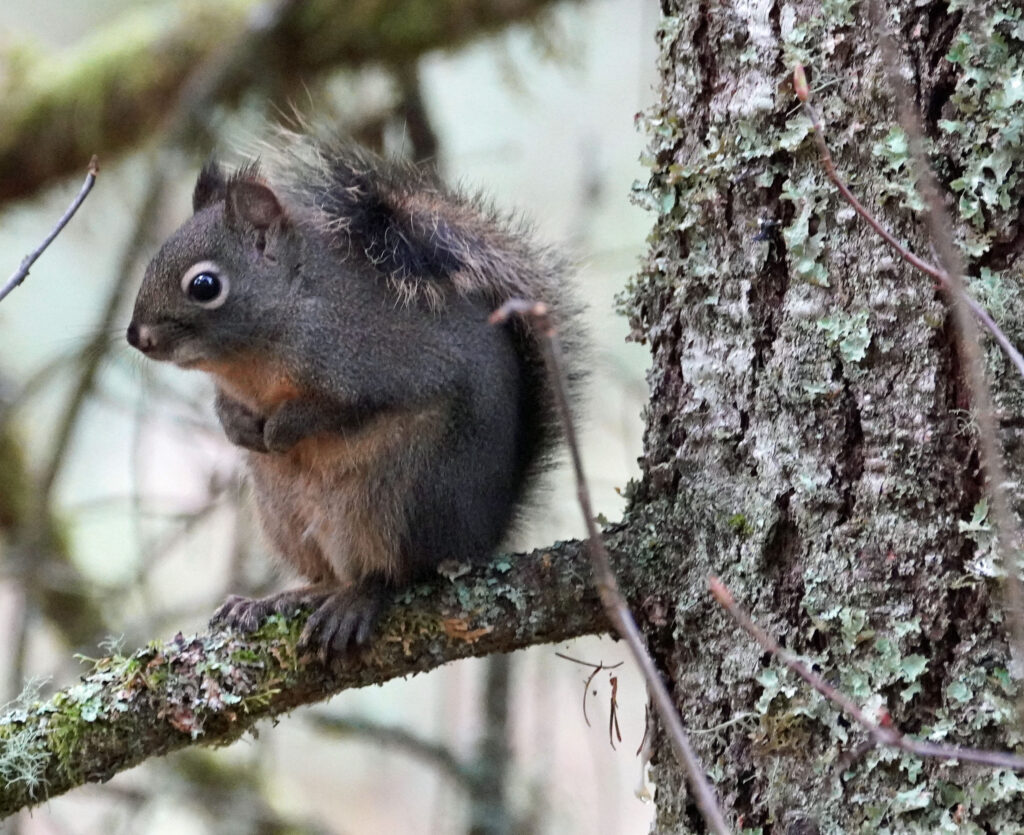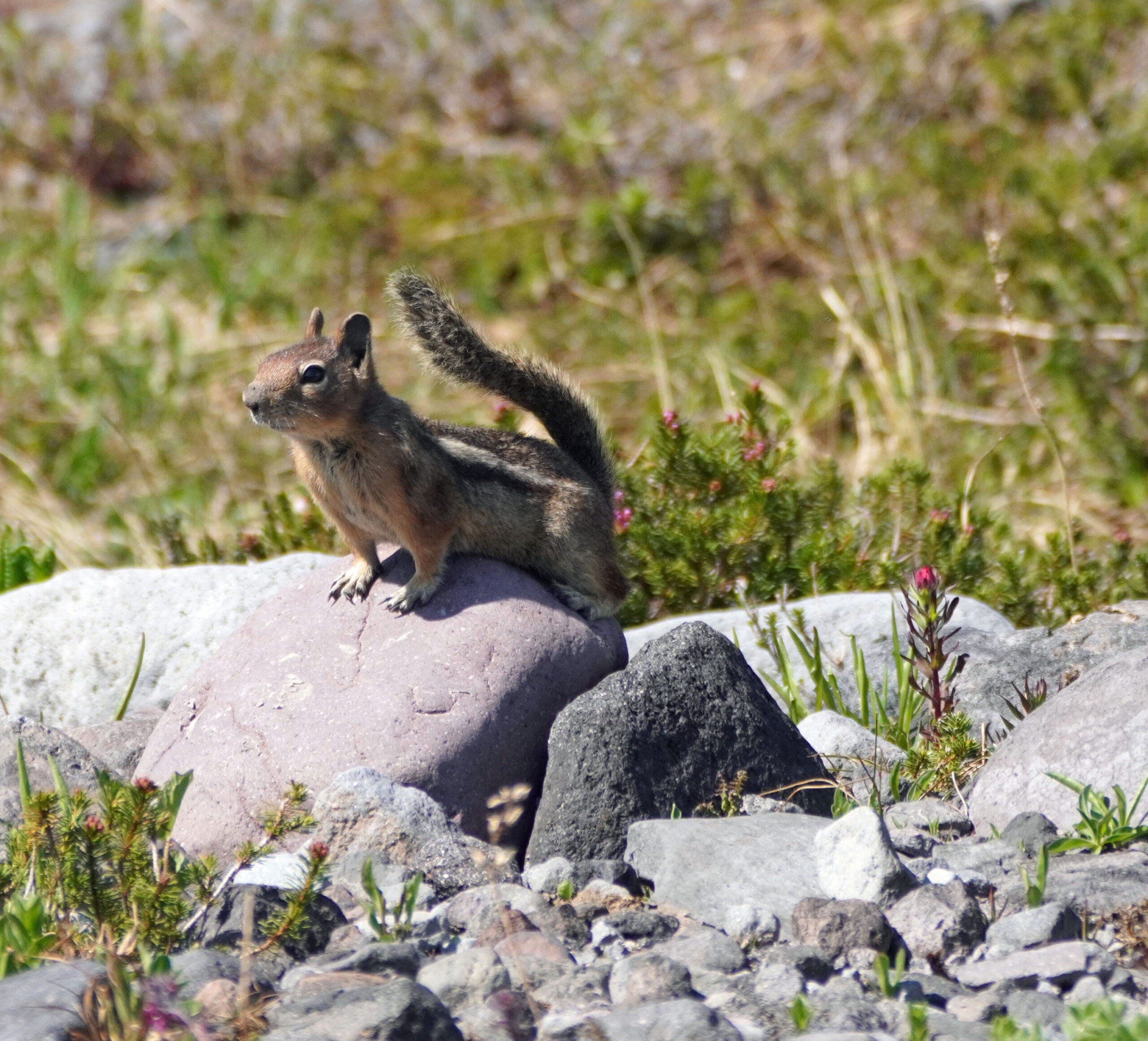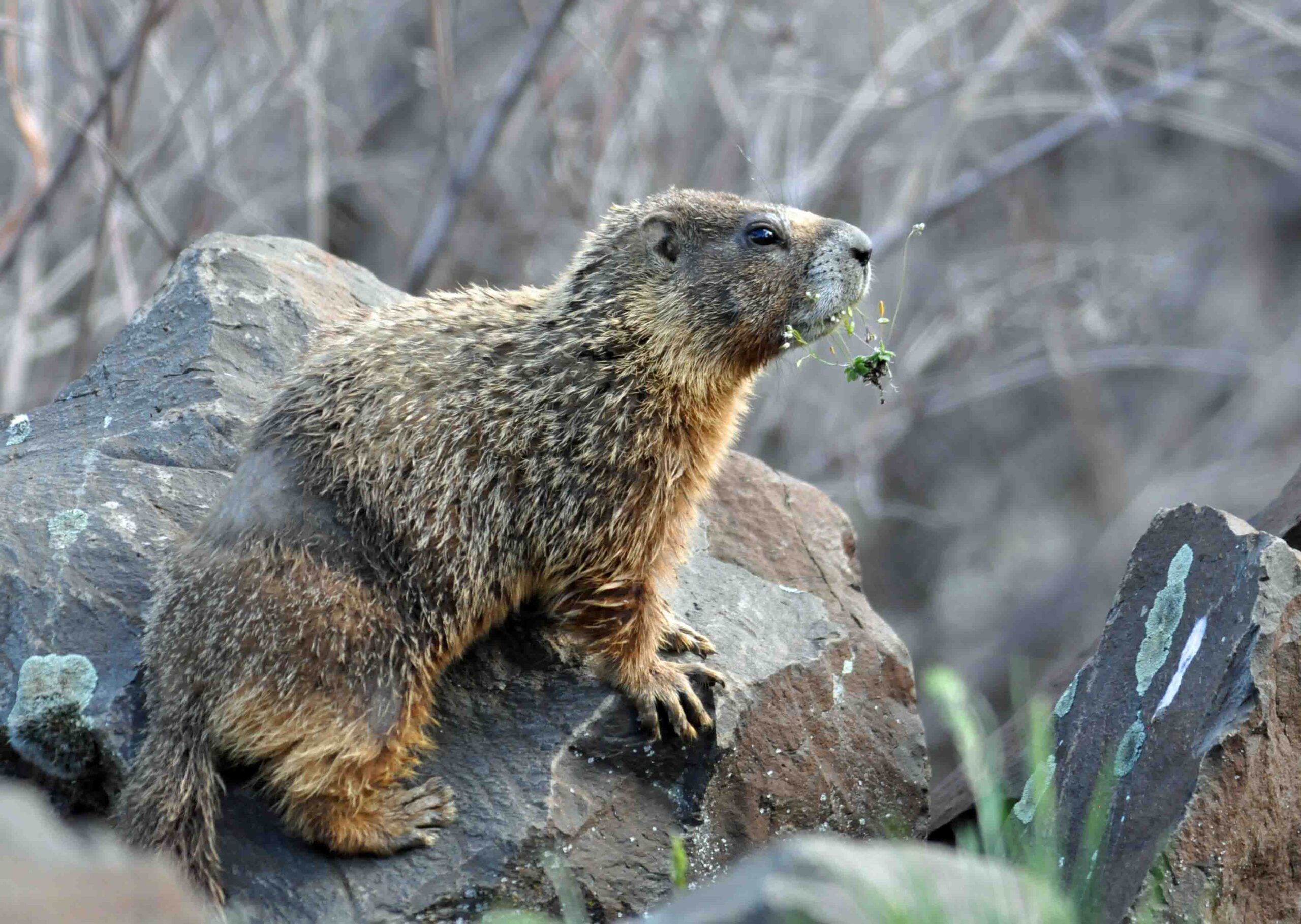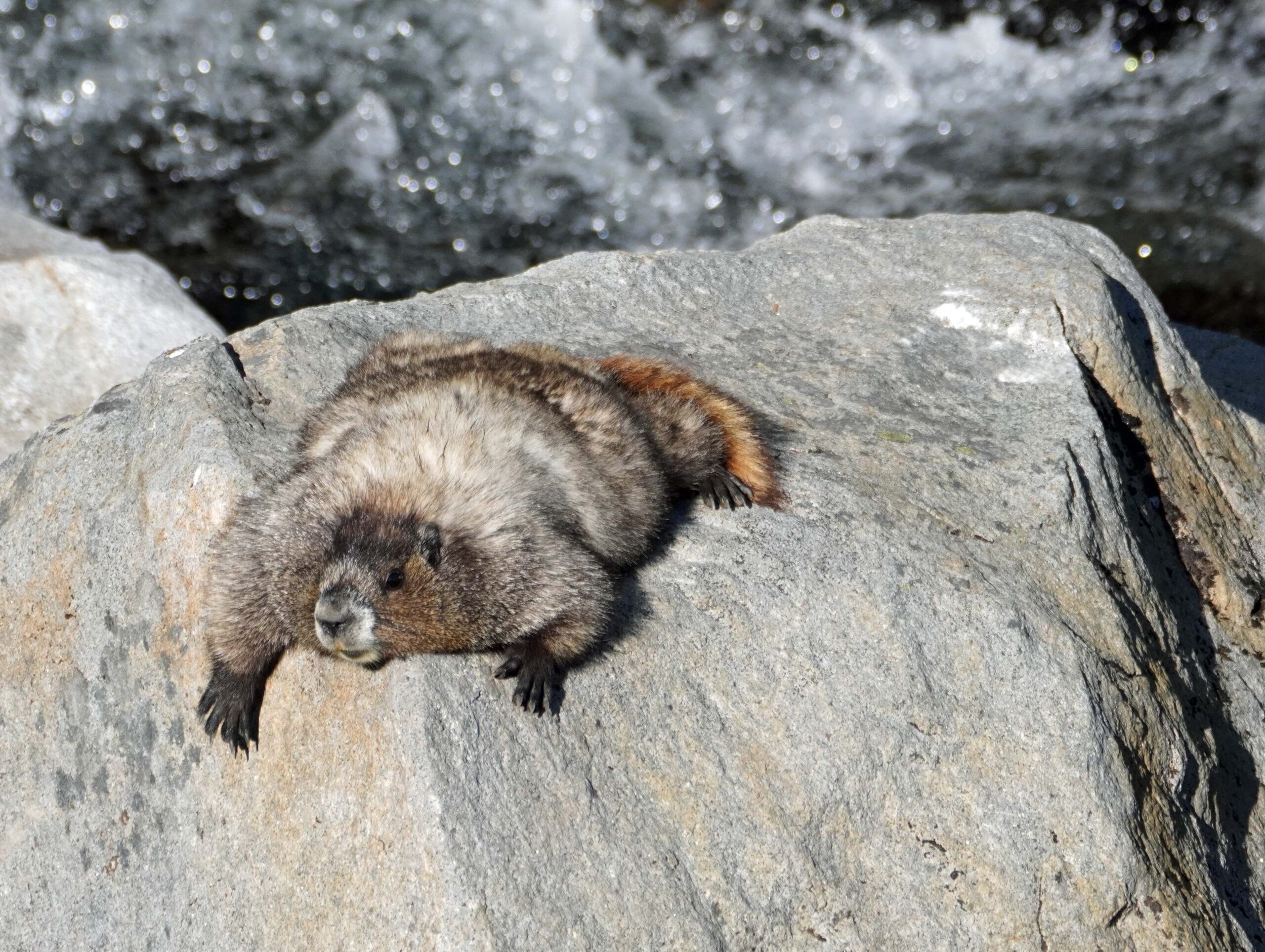Time to share pictures of a few of our NW squirrel friends before they disappear for the winter. Douglas’s Squirrel is in the family of tree squirrels, and are significantly smaller than Gray Squirrels. Notice how that black stripe separates its orange belly from its gray back. Way up, but not spending time in trees is a ground squirrel called the Cascade Golden-Mantled ground squirrel. You can see dozens of them while hiking up around Mount Rainier. One may even join you for lunch! Going back down to the ground level you will sometimes run into a much bigger squirrel – a Yellow Bellied Marmot. Go back up in the mountains and you’ll see an even bigger member of the squirrel family – the Hoary Marmot.
Winter is coming and our squirrel friends are very busy getting prepared for the cold season. Everyone has surely seen very common Gray Squirrels running around, so I thought to share some pictures of a few of our other NW species. Yes, marmots are part of the squirrel family, and all squirrels are classified as rodents thanks to their upper and lower incisor teeth that never stop growing. All rodents and squirrels, however, have different personalities and habitats. Here in the NW thanks to our numerous mountain terrains our squirrel friends vary from very low to very high altitudes. I’m sure that just about anyone who has been hiking in the Mount Rainier National Park, especially, up near the Paradise Inn has seen the Hoary Marmots. There is a location up there with so many of them I call it “Marmot Hill.” If you’ve been there you have probably heard them, too. They often make so much noise they have earned the nickname “Whistle Pigs.” Although these marmots are very much in view they prefer to keep a distance from us humans. But there is another squirrel in the park’s higher elevation that gets very friendly and thankful to us. Cascade Ground Squirrels will even take treats right from your fingers. Yes, I know you are not supposed to feed animals in the wild but it is very hard to resist when the little guys come right up to you when you are taking your hiking lunch break.
Drop down to a much lower elevations and you will see a pair of squirrels similar in appearance to their higher up relatives. The Yellow Bellied Marmot gets its common name for an obvious characteristic that makes it easy to identify. They are intense burrowers and do not prefer life up in the mountains. In fact, the location where I first saw a Yellow Bellied Marmot surprised me. I was strolling alongside a river in a park just outside of Boise, ID, and one popped up in the grassy area right in front of me. Tree squirrels, of course, inhabit the lower elevation forested areas. Most of them are very common but some of the smaller species are sometimes hard to find. One day a certain tree squirrel showed up in a place where I did expect to find one. I had spent a long time wandering around a wooded area in the military post JBLM until I finally found the one known as Douglas’s Squirrel. The little guy was comfortably sitting on a tree branch and let me get pretty close.
If you are interested in the squirrels that inhabit our territory and want to know how to identify them, I highly recommend this book:
“Squirrels of the West” by Tamara Hartson (a Lone Pine Field Guide)
<
>





Leave a Reply
You must be logged in to post a comment.